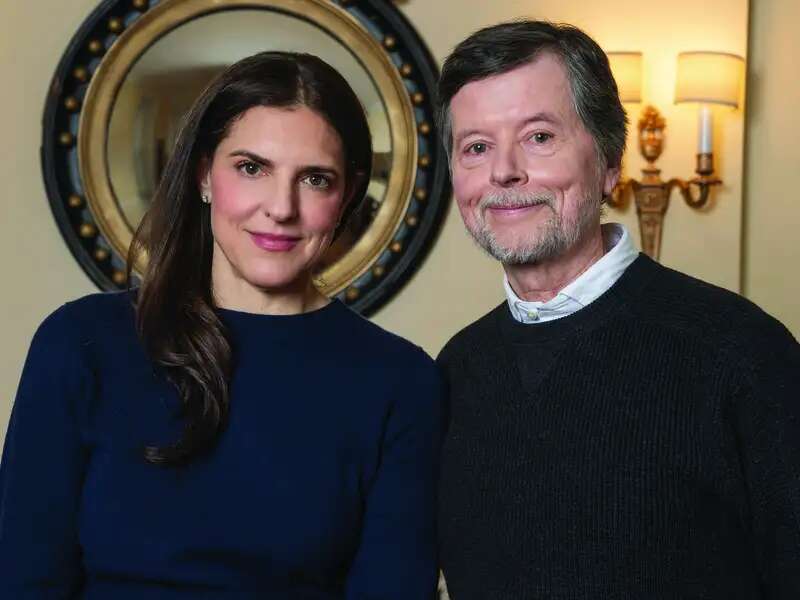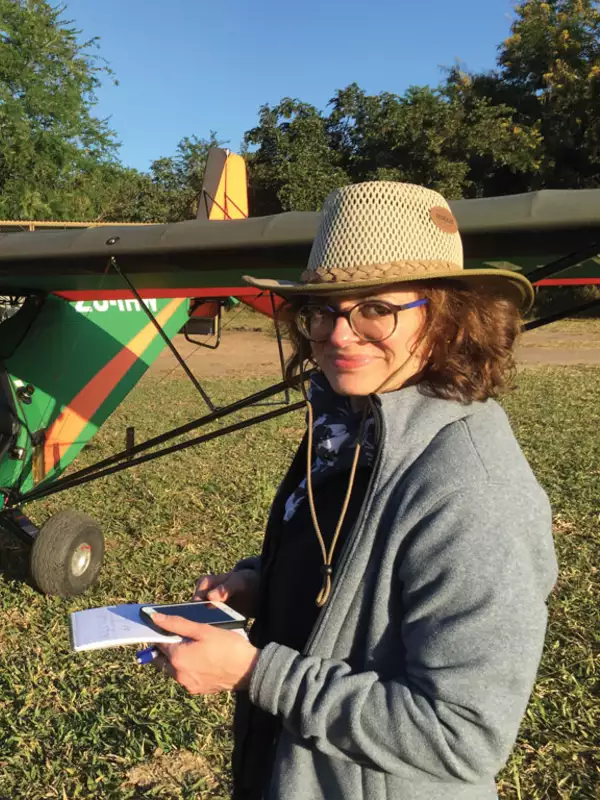
Ahead of Ken Burns’s Latest Docuseries, Co-Director Sarah Botstein '94 Shares her Path, Process.

In one of her most vivid childhood dreams, Natalie Angier ’78 watched as gallons of milk poured from the Milky Way galaxy and Good Humor truck music jingled in the background. The Pulitzer Prize-winning science writer and columnist for The New York Times says her fascination with the night sky began at a young age, even though in the Bronx neighborhood where she spent her early childhood, she recalls, she was more likely to see police helicopters than stars overhead.
“We spent two weeks a year in the Catskills, and the night sky was something that always astonished me,” Angier says. “I would have been an astronomer, but I learned early on that I probably was not a born scientist.”
She did learn that she was a born feminist. Angier remembers reading her elementary school chapter books and realizing the storylines largely involved boys going on adventures. The one story she recalls that featured a female character was comparatively static. “I remember being horrified, thinking ‘Where are our lives?’”
When Natalie was 12 years old, her family relocated to New Buffalo, Michigan. After high school, she attended the University of Michigan for two years before deciding to transfer to Barnard, where she studied English, physics, and astronomy.
“Barnard was the only school I considered because I thought a women’s college would be the kind of environment I would feel most comfortable in,” she says. “Being a lifelong feminist, I wanted the support of other women.”
While studying in the physics library at Columbia, Angier spotted a copy of New Scientist, a popular British science magazine. The publication was unlike any available in the United States at the time. “It combined stories about science with politics and social issues and humor,” Angier says. “It was a full-bodied magazine, and I thought we needed something like that. I, personally, was going to start that magazine. That was my goal.”
Angier didn’t end up starting her own magazine but did achieve the next best thing. Soon after graduating from Barnard with high honors, she joined the original staff of Discover magazine, launched by Time Inc. in 1980. One of several popular science titles started around that time, Discover aimed to nurture an interest in science among educated nonprofessionals.
She later worked as the science writer for Time magazine, an editor at the now-defunct women’s magazine Savvy, and a professor at New York University’s graduate program in science and environmental reporting. She joined the staff of The New York Times in 1990 and the following year won a Pulitzer Prize for beat reporting. She’s authored four books, including The Beauty of the Beastly: New Views on the Nature of Life and the New York Times bestseller Woman: An Intimate Geography, which was a finalist for the National Book Award.
In her writing, Angier promotes women in science by highlighting their work. Indirectly, this acknowledgment can help women gain more prominent roles in the scientific community, receive often-overdue recognition, and even win prestigious prizes. In 1991, Angier penned a column for the Times rebuking the National Academy of Sciences for electing a class of 60 with only six women that year.
“I wasn’t the only one writing about it; others were doing the same,” Angier says. “But the truth is you have to pay attention. The National Academy started to feel the heat, and they responded to that pressure.”
Angier wrote a follow-up column in 2003 titled “No Parity Yet, but Science Academy Gains More Women” in which she acknowledged that the ratio had budged. Nearly one-quarter of that year’s 72 American inductees were women.
The profiles she’s written on scientists focus more on women than men, she says, although she takes issue with focusing too much on any individual when talking about science, as it’s not an accurate portrayal of how it is carried out.
“Science is very much a team effort, and the concept of a great man, usually, or even a great woman of science is a mistake,” Angier says. “The Nobel Prizes emphasize how ‘we can only acknowledge a maximum of three individuals,’ and then people fight over who deserves the credit. But if you look at a science journal and you see how many authors are listed on every single paper, how can you possibly say this is one person’s work?”
Another thing that raises her hackles? The term “STEM education,” which Angier wrote about in a 2010 New York Times essay expressing her disdain for the “odious” acronym particularly because the term “basic and applied sciences” adequately covered all the disciplines in STEM.
“The word ‘science’ has such a noble history behind it,” Angier says. “Science encompasses biology, physics, chemistry, geology, ecology, psychology, and on and on. It pisses me off that engineering and technology each get their own letter as though the world we build is ever so much more important than the one we were given and that we increasingly muck up.”
Years spent accompanying researchers in the field and observing experiments in labs have only deepened Angier’s appreciation for the scientists seeking to understand how the world works. As a science journalist, she advocates for science being part of our daily discourse.
“Science is glorious and interesting,” Angier says. “I’ve always believed that people should understand science better than they do, and there’s no reason why they shouldn’t. The role of the science writer is to present science in a way that makes people feel like they are part of the scientific enterprise, that it’s not just the property of the scientists. It belongs to all of us. It’s like art or music or anything else. It’s a part of human culture.”